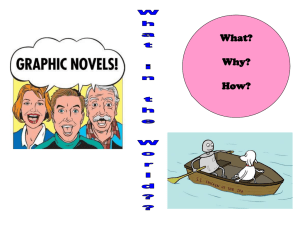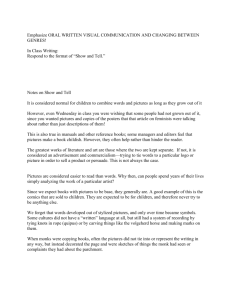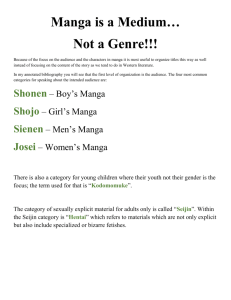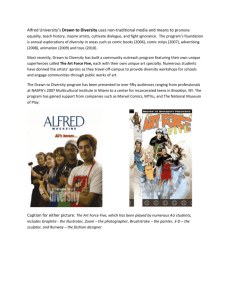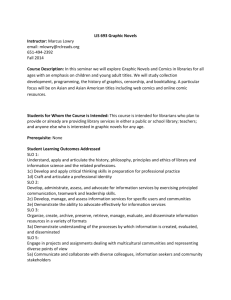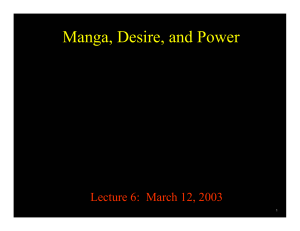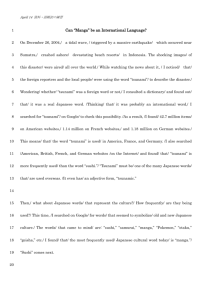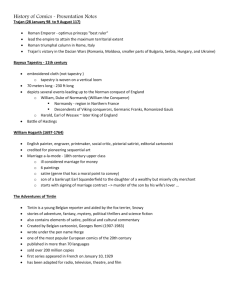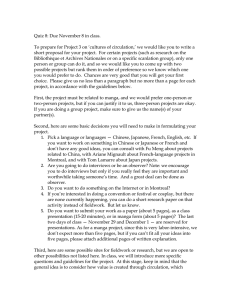Graphic Novels
advertisement
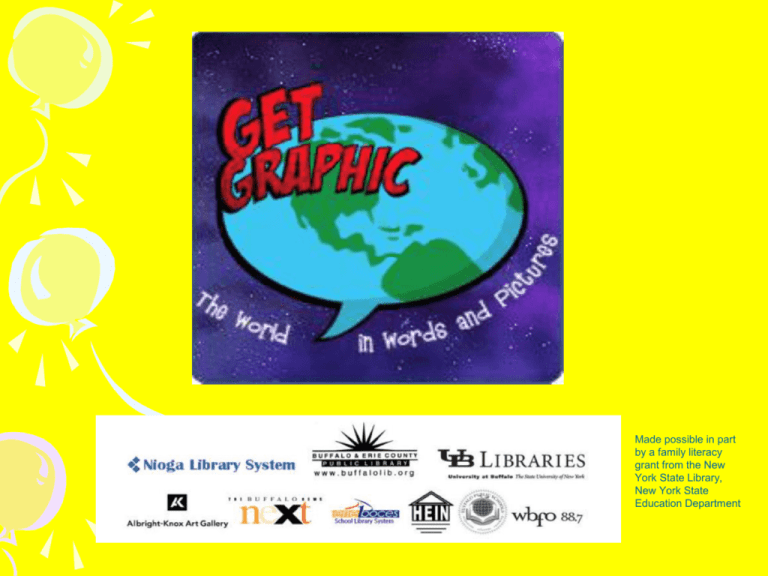
Made possible in part by a family literacy grant from the New York State Library, New York State Education Department What? Why? How? • Same format as comic books • Text & illustrations present information • Book-length, usually contain one story • Medium, not genre Caption Panel Thought Balloon Sound Effect Dialog Balloon Gutter Major Types Humor Non-Fiction Fantasies Adaptations or Spin-offs Realistic Fiction Personal Stories Toon Books • For emerging readers age 4+ • Can be read to or by children • Vetted by educators A little history • Comic Strip=grandfather of Graphic Novel • Around since end of 1800s • Originally used to draw people to Sunday paper First comic strip • Appeared in New York World: 1895 • R. F. Outcault • Increased sales • Eventually endorsed soapwhiskey Katzenjammer Kids • 1897 • Used word balloons • Used multiple panels to tell story The Comic Book • 1933-reprints • Initially free • 1935-new comics & original characters • 10 cents each Popular comics • Superman – First superhero – On newsstands: 1938 • Superheroes big during World War II • After WWII: crime, science fiction and horror comics 1950’s: comics in crisis! • Frederic Wertham • Comics examined by US Senate • Comics banned and burned A New Beginning • Late 1950’s: Justice League of America born • 1961: Fantastic Four, Incredible Hulk, & Spiderman • 1960’s: Self-published underground comics Milestones in the Graphic Novel World • 1978-Will Eisner coins term • 1986- Batman: the Dark Knight Returns • 1987- The Watchmen • 1992- Maus: A Survivor’s Tale wins Pulitzer • 2005-”Graphix” imprint launched • 2006- American Born Chinese named NBA finalist for Young People’s Literature • 2007- American Born Chinese wins Printz Award for excellence in YA literature • 2007 The Invention of Hugo Cabret finalist for NBA • 2008 Invention wins Caldecott • 2007-YALSA creates new annual booklist: “Great Graphic Novels for Teens” • 2009-NYT Graphic Books Bestseller List President Obama collects both Spider-Man and Conan the Barbarian comics Manga Manga history • Manga=comic books • Period before WWII=beginning of modern manga • Mid 1990s=came to US • “God of Manga” Osamu Tezuka • Hayayo Miyazaki: anime & manga • Manga read by ALL How to read a Manga Page Unlike traditional books, Manga is read “backwards” from back-tofront Often, if you start at what looks like the front of the Manga, you will see a message like this 3 2 1 4 6 7 Panel Order & Dialog Balloons 5 Panels and dialog balloons are read “reversed” 10 11 8 9 Manga Terms • Shonen: teenage boys • Shojo: teenage girls • Shonen-ai / Yaoi=boys love • perceived as subversive=attractive! • Ratings • Read by? •2/3 of GN market=manga •75%=13-17 y/o girls Why Graphic Novels & Manga? • 6.3 million secondary school students are reading below grade level. • Average American age 15-24 spends only 7 minutes of daily leisure time reading. • Students with access to a variety of reading materials have higher average reading scores. Graphic Novels & Manga: • Present complex material in readable text • Serve as a bridge to more difficult reading • Challenge readers of more traditional literature • Embrace nature of multimedia world • Fulfill NCTE’s “21st Century literacies” streams, simultaneous information) (multiple Learning more about Graphic Novels! Reviews & More School Library Journal Library Journal Diamond Comics Bookshelf Cooperative Children’s Book Center • Get Graphic! • First Second Books • Public Square Books Creating Comics on the Web • read*write*think comic creator • MakeBeliefs Comix • Stripcreator
